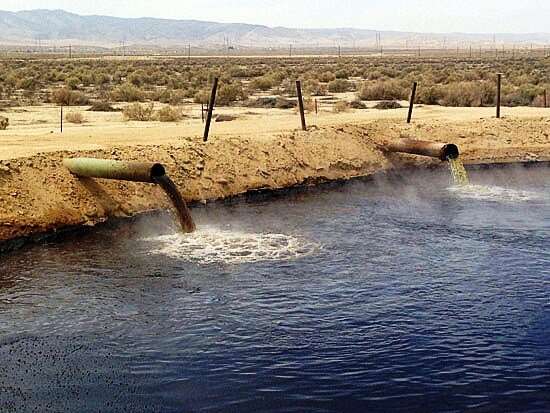Managing earthquakes triggered by oil production

A team of scientists has developed an approach to disposing wastewater that reduces the danger of triggering an earthquake.
Oil production generates large volumes of wastewater, which is often injected into the ground as a means of disposal to avoid polluting surface waters. However, injections have the potential to cause earthquakes.
A study documenting the method devised by a multidisciplinary team of scientists to avoid such earthquakes has been published today in the journal Nature. Their method was tested in western Europe's largest onshore oil field, the Val d'Agri field in southern Italy.
Hundreds of small earthquakes were detected there after field operators injected wastewater into an abandoned well in 2006.
"The earthquakes were detected within hours of injection," said James Dietrich, study co-author and UC Riverside distinguished professor emeritus of geophysics. "The cause and effect relationship was clear."
Wanting to learn what levels of injection are safe, the field operators convened a team from UCR, Harvard, Massachusetts Institute of Technology, and the University of Texas.
Dieterich took data gathered in the field and created models that accurately reproduced seismic events observed between 1993 and 2016. Based on studies conducted in Dieterich's laboratory, his models help explain how a small change in the amount of stress on a fault can result in a large change in the rate of earthquakes.
The research team then used models to forecast the effects of using three different water injection rates. They determined that a relatively low injection rate was sustainable and should not induce shaking.
Between January 2017 and June 2019, these projections were tested in the field, and seismic activity was consistent with the predicted levels. The authors suggest that this approach can be used to manage earthquakes generated by other activities, such as carbon sequestration.
This strategy to reduce global warming involves capturing industrial carbon dioxide and putting it into the ground rather than the atmosphere.
"One of the big impediments to this is that gigantic volumes of fluids injected into the ground will probably trigger earthquakes," Dieterich said. "How can that be managed? We've learned a little here that may help along those lines, and for related problems like fracking."
More information:
Bradford H. Hager et al, A process-based approach to understanding and managing triggered seismicity, Nature (2021). DOI: 10.1038/s41586-021-03668-z
Provided by University of California - Riverside